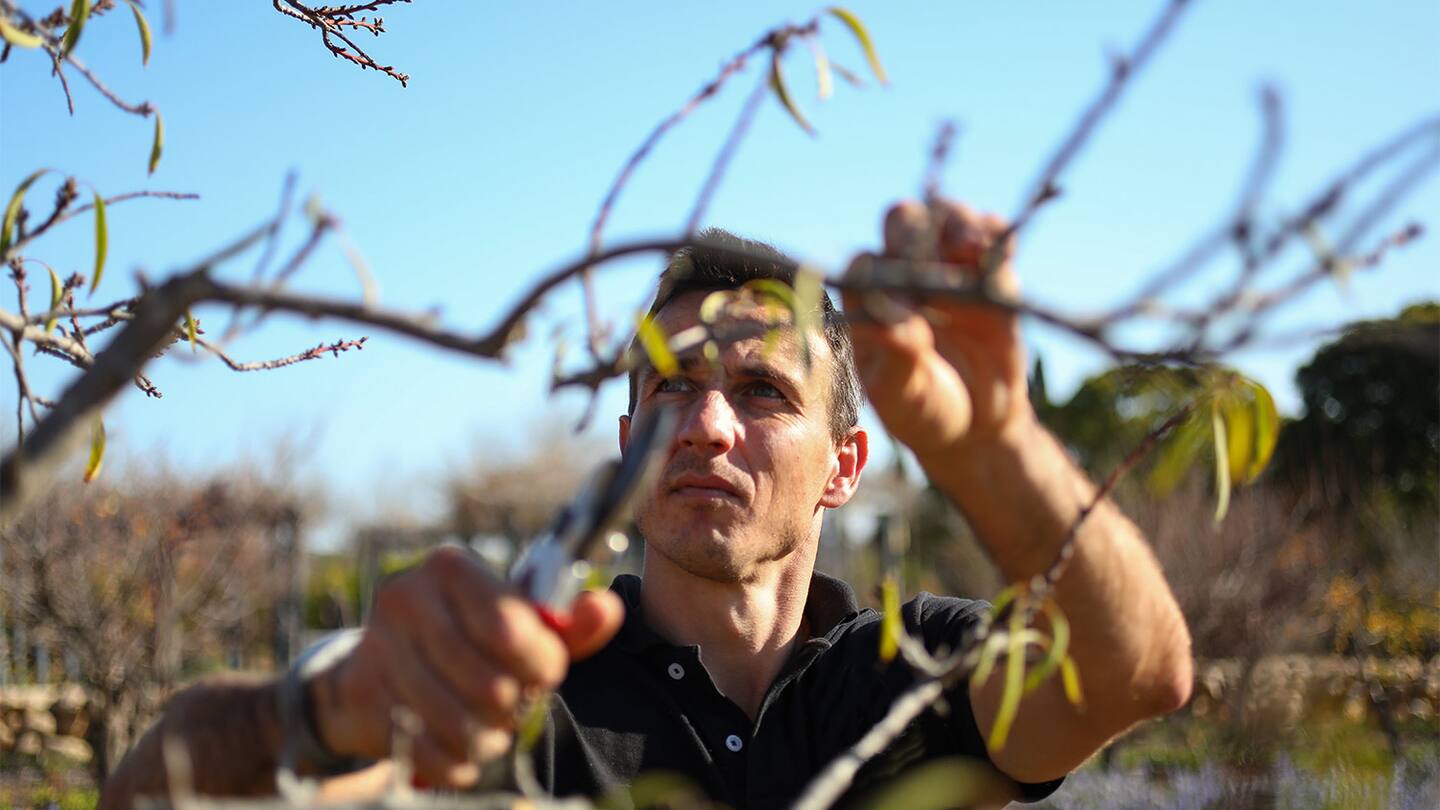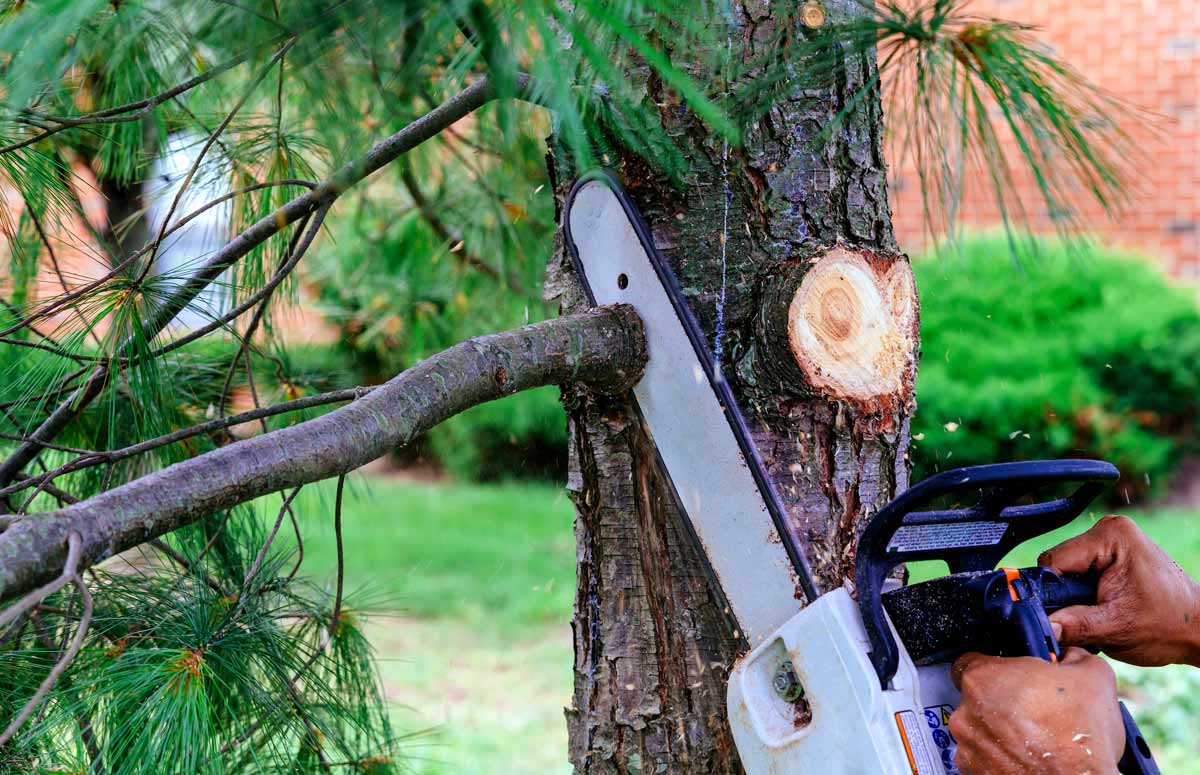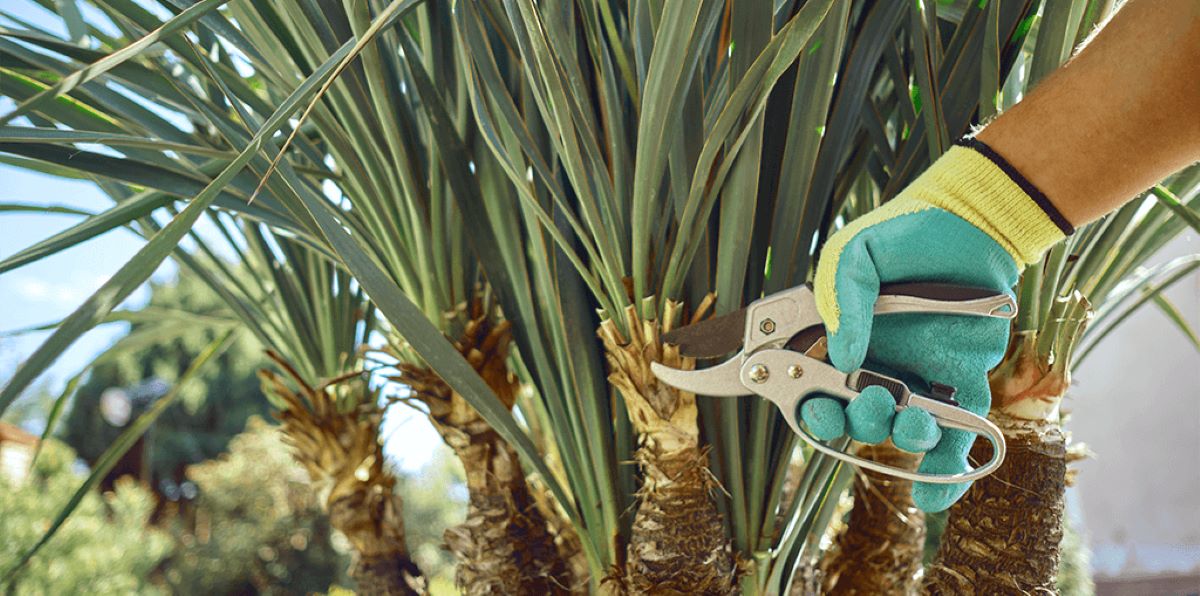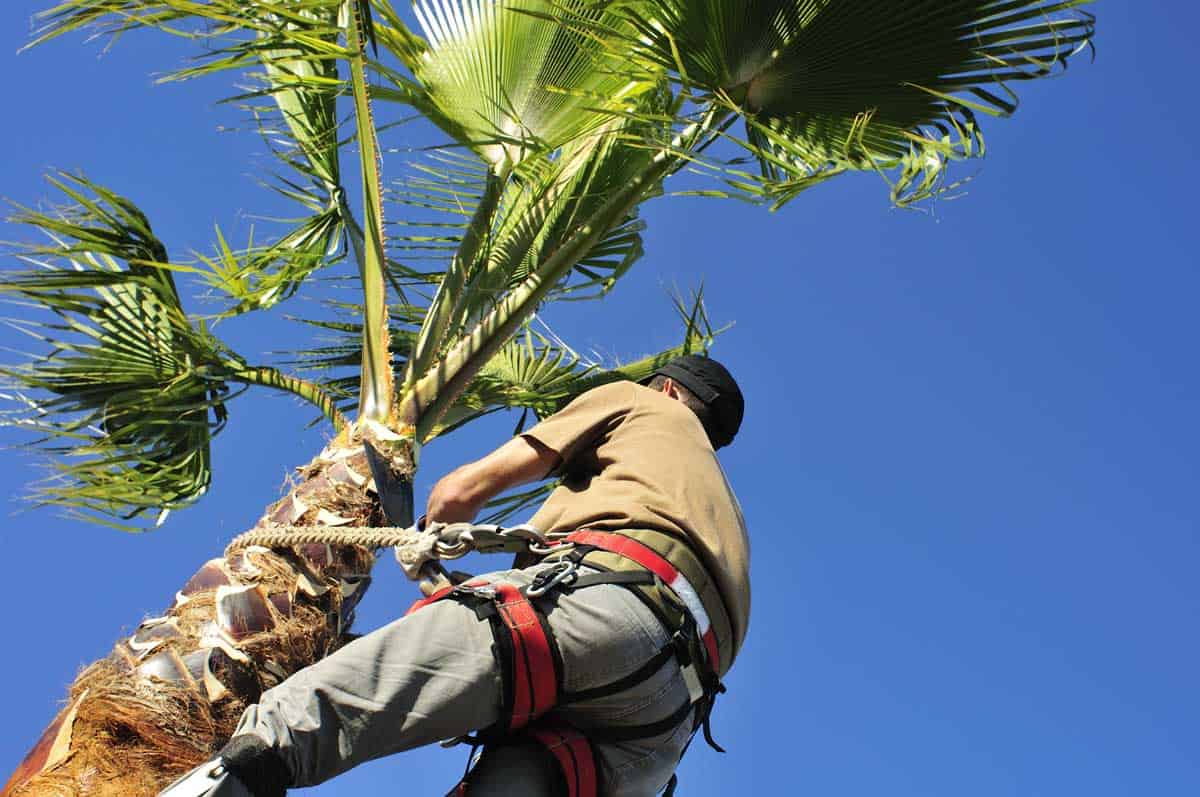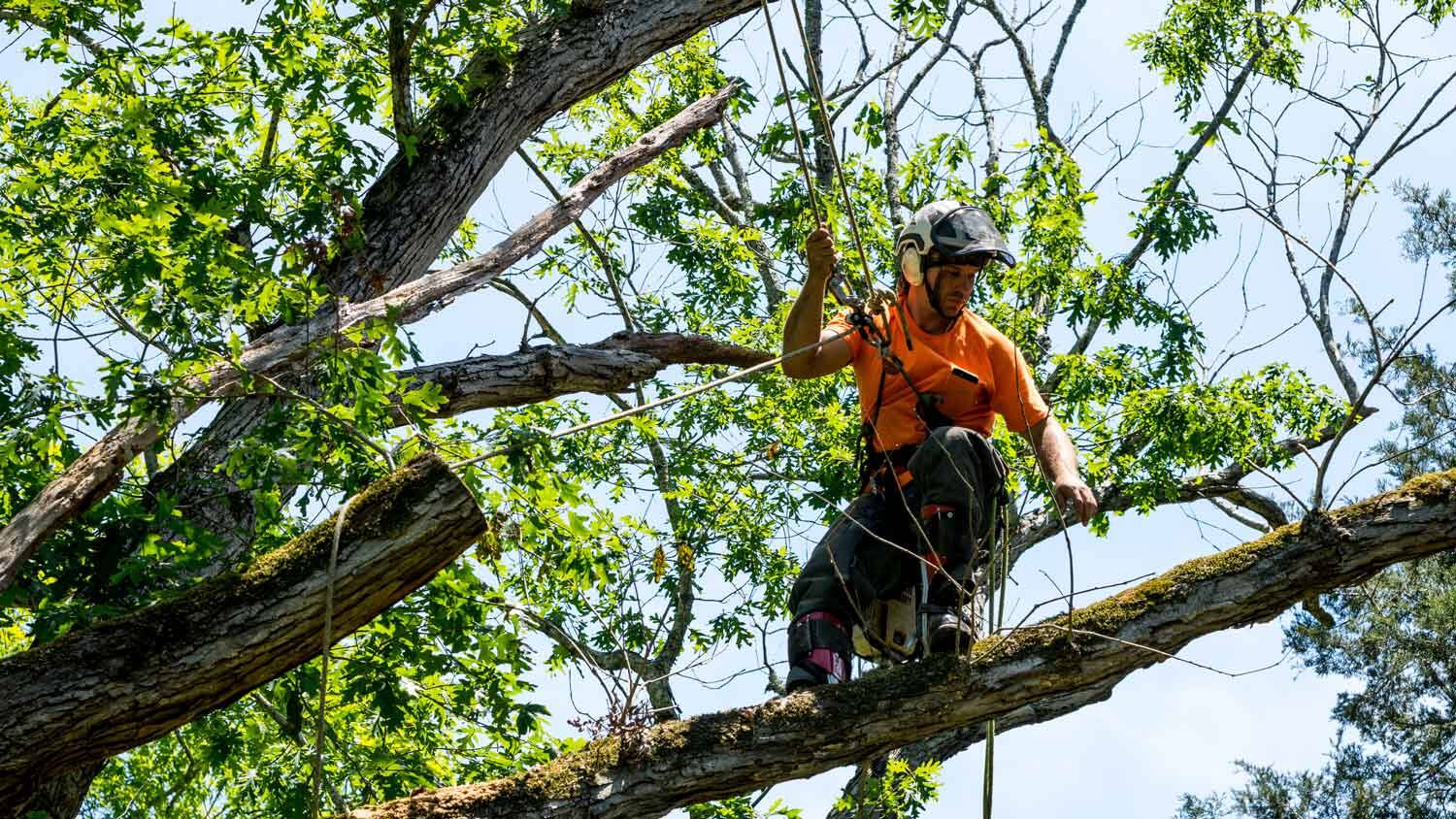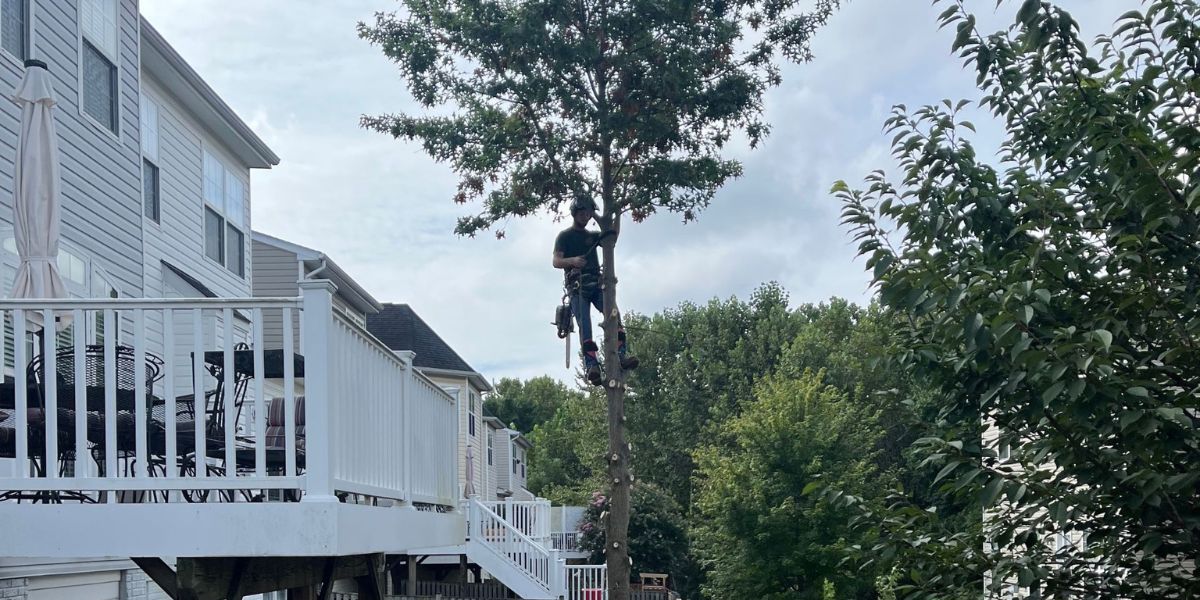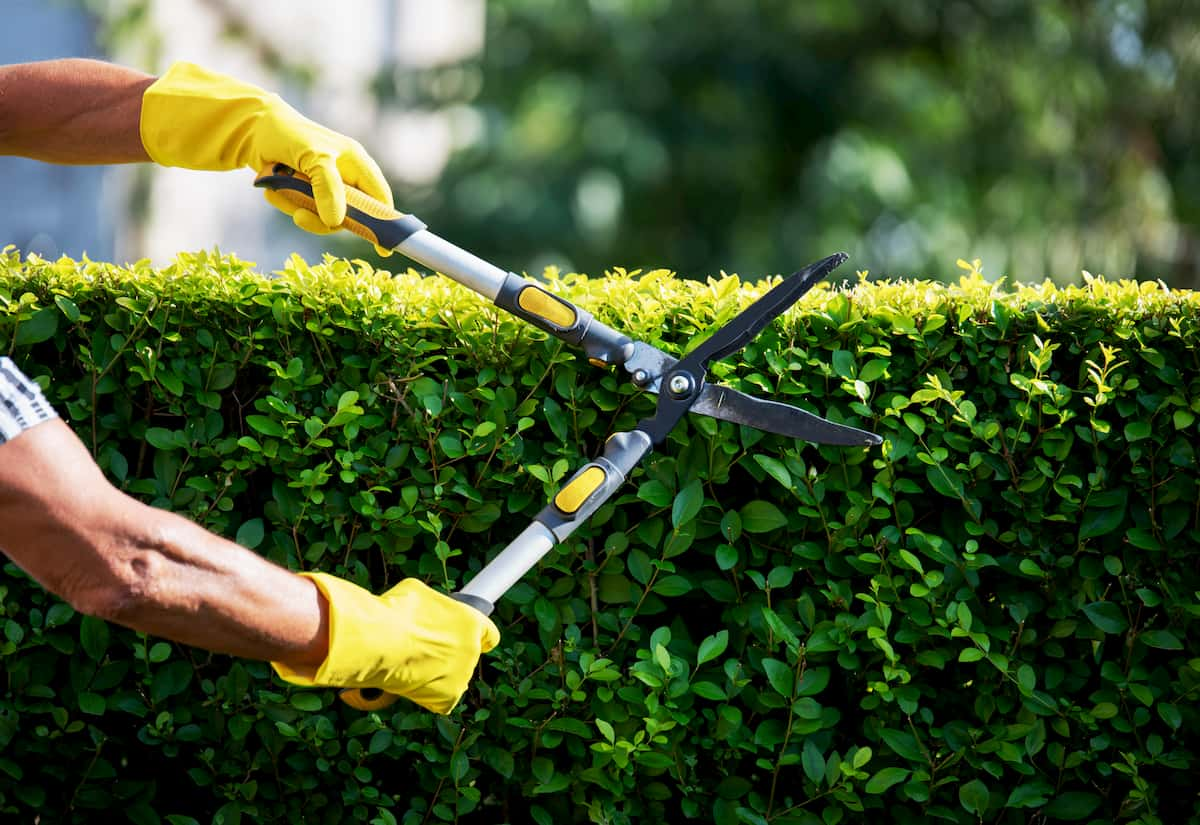Home>Gardening Techniques>Plant Care>How To Trim Trees Properly
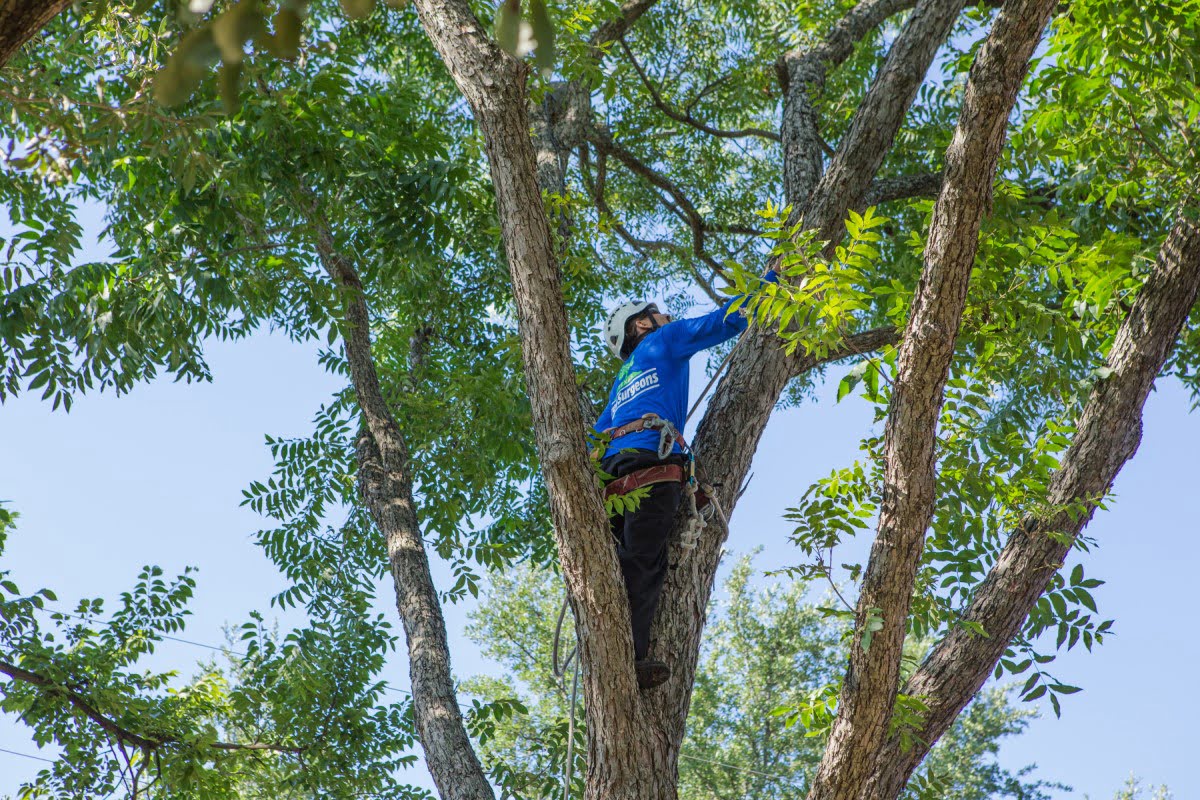

Plant Care
How To Trim Trees Properly
Modified: January 22, 2024
Learn the proper way to trim trees with our comprehensive guide on plant care. Keep your trees healthy and thriving with these expert tips.
(Many of the links in this article redirect to a specific reviewed product. Your purchase of these products through affiliate links helps to generate commission for Chicagolandgardening.com, at no extra cost. Learn more)
Table of Contents
- Introduction
- The Importance of Proper Tree Trimming
- Tools and Equipment Needed
- Step-by-Step Guide to Tree Trimming
- Pruning Techniques for Different Tree Types
- Safety Precautions to Consider
- Signs That Indicate Tree Trimming is Needed
- Common Mistakes to Avoid During Tree Trimming
- Benefits of Regular Tree Trimming
- Conclusion
Introduction
Welcome to our comprehensive guide on how to properly trim trees. Tree trimming plays a crucial role in maintaining the health and aesthetics of your trees. By implementing proper pruning techniques and using the right tools, you can help your trees thrive and enhance the overall beauty of your property.
Tree trimming is not just about randomly cutting branches; it requires careful consideration and knowledge of tree biology. When done correctly, tree trimming promotes healthy growth, removes diseased or damaged branches, and improves the tree’s structural integrity.
In this article, we will provide you with step-by-step guidance on tree trimming, the importance of regular trimming, the tools and equipment you’ll need, safety precautions to consider, and the common mistakes to avoid. Whether you’re a seasoned gardener or just starting out, this guide will equip you with the knowledge to take care of your trees and keep them looking lush and vibrant.
So, if you’re ready to learn how to trim your trees properly, let’s dive in!
The Importance of Proper Tree Trimming
Proper tree trimming is essential for the overall health and well-being of your trees. It goes beyond simply enhancing the aesthetic appeal of your landscape; it plays a crucial role in maintaining the structural integrity and promoting healthy growth.
One of the primary reasons to trim your trees regularly is to remove dead, damaged, or diseased branches. These branches can pose safety hazards as they are more susceptible to breakage and can fall onto structures or unsuspecting individuals. By removing them through proper pruning, you reduce the risk of accidents and property damage.
Additionally, tree trimming helps to maintain the desired shape and size of your trees. With periodic trims, you can control the growth, preventing overcrowding, and ensuring that all adjacent trees receive adequate sunlight and airflow. This prevents the development of weak branches and improves the overall structural stability of the tree.
Another essential aspect of tree trimming is to promote healthy growth. By selectively removing certain branches, you can redirect the tree’s resources to the remaining branches, encouraging them to grow stronger and healthier. This ensures that the tree can resist pests, diseases, and environmental stressors, ultimately prolonging its lifespan.
In some cases, tree trimming is necessary to clear obstructed views or provide clearance for structures such as buildings, power lines, or roadways. Properly trimmed trees not only improve visibility but also prevent potential hazards and conflicts with surrounding structures.
Furthermore, regular tree trimming can enhance the overall aesthetic appeal of your property. By shaping and pruning your trees, you can create visually appealing landscapes that complement your home or business. Well-maintained trees can also increase the curb appeal of your property, potentially adding value in the real estate market.
Overall, proper tree trimming is a vital aspect of tree care. It promotes safety, improves structural integrity, encourages healthy growth, and enhances the aesthetics of your property. It is a proactive measure that ensures the longevity and well-being of your trees, making it an essential task for any property owner.
Tools and Equipment Needed
Proper tree trimming requires the use of the right tools and equipment to ensure safe and effective pruning. Before you start trimming your trees, gather the following tools:
- Pruning Shears: Also known as hand pruners or secateurs, these are used for cutting small branches and twigs. Look for sharp, bypass shears for clean cuts.
- Loppers: Loppers have long handles and are used for cutting larger branches that are too thick for pruning shears. Choose loppers with ratchet or gear mechanisms for increased cutting power.
- Pruning Saw: A pruning saw is essential for cutting thicker branches. Look for a saw with a curved blade and razor-sharp teeth to make clean cuts without causing damage to the tree.
- Pole Saw: If you have tall trees, a pole saw comes in handy for reaching high branches. It consists of a long pole with a saw attachment at the end, allowing you to trim branches from the ground.
- Tree Pruner: A tree pruner combines a pole saw with a lopper or pruning shear head, allowing you to trim both high and low branches. It is a versatile tool for tree maintenance.
- Protective Gear: Safety should be your top priority when trimming trees. Wear gloves, safety goggles, and a hard hat to protect yourself from falling debris. Consider wearing ear protection as well if using power tools.
- Ladder: Depending on the height of your trees, you may need a ladder to reach higher branches. Choose a sturdy ladder and ensure it is on stable ground before climbing.
- Rope and Harness: If you need to climb tall trees or work at heights, a rope and harness system is essential for your safety. Seek professional guidance if you are not experienced in climbing trees.
- Cleaning and Sanitizing Tools: Keep your tools clean and sharp to prevent the spread of diseases between trees. Have a sharpening tool, rubbing alcohol, and a clean cloth to wipe down your tools after each use.
Having the right tools will make your tree trimming tasks easier and more efficient. Always handle your tools with care, follow the manufacturer’s instructions, and maintain them properly for optimal performance.
Step-by-Step Guide to Tree Trimming
Tree trimming is a skill that can be mastered with practice and knowledge. Follow these step-by-step instructions to ensure a successful and effective tree trimming process:
- Inspect the Tree: Start by assessing the tree and identifying the branches that need to be trimmed. Look for dead, diseased, or damaged branches, as well as any crossing or rubbing branches.
- Plan Your Cuts: Determine the size and location of the branches you plan to remove. Make sure you are not removing more than 25% of the tree’s foliage, as excessive pruning can stress the tree. Aim to maintain the tree’s natural shape and balance.
- Start with Dead or Diseased Branches: Begin by removing any dead or diseased branches first. Use sharp pruning shears or loppers to make clean cuts just outside the branch collar, where the branch connects to the trunk. Avoid leaving stubs, as they can invite pests and diseases.
- Trim Crossing or Rubbing Branches: Next, identify any branches that are crossing or rubbing against each other. Choose the weaker or less desirable branch and remove it at the branch collar. This will prevent further damage and allow the remaining branch to grow without restriction.
- Thin Out Excessive Growth: If your tree has dense foliage, thinning out some branches can promote better airflow and sunlight penetration. Select a few crowded branches and remove them at the branch collar, keeping in mind the overall balance and shape of the tree.
- Remove Suckers and Water Sprouts: Suckers are small shoots that emerge from the base of the tree or along the trunk, while water sprouts are fast-growing vertical branches. These growths redirect valuable nutrients and can weaken the tree. Trim them off close to the branch collar.
- Step Back and Evaluate: After each round of trimming, step back and assess the tree’s appearance. Make any necessary adjustments to maintain a balanced shape and ensure that no individual branch is dominating the canopy.
- Dispose of Debris: Properly dispose of all the trimmed branches and debris. You can compost smaller branches or consult with local waste disposal services for larger branches.
- Maintain and Monitor: Regularly inspect your tree for any new growth, signs of disease, or pests. Monitor its overall health and perform routine maintenance, including watering, mulching, and fertilizing, to support its growth and vitality.
Remember, tree trimming is best done during the dormant season, typically in late winter or early spring. However, there are exceptions for certain tree species, so research the specific requirements of your tree beforehand.
By following this step-by-step guide, you can ensure that your tree trimming efforts are effective, promote tree health, and enhance the aesthetic appeal of your landscape.
Pruning Techniques for Different Tree Types
Pruning techniques can vary depending on the type of tree you are working with. Different tree species have unique growth patterns and characteristics that should be considered when trimming. Here are some pruning techniques to keep in mind for different tree types:
- Deciduous Trees: Deciduous trees, such as oak, maple, and birch, lose their leaves in the fall. When pruning deciduous trees, it is best to trim during the dormant season. Focus on removing dead, diseased, or damaged branches, as well as any branches that are crossing or rubbing against each other. Open up the canopy by selectively thinning branches to improve airflow and sunlight penetration.
- Evergreen Trees: Evergreen trees, like pine, spruce, and cedar, retain their foliage year-round. Pruning evergreen trees can be done throughout the year, but it is generally recommended to do so in early spring. Lightly trim the tips of the branches to maintain the tree’s natural shape. Be cautious not to remove too much foliage, as it may stress the tree and affect its ability to photosynthesize.
- Fruit Trees: Fruit trees, such as apple, peach, and cherry trees, require specific pruning techniques to maximize fruit production and maintain tree health. Start by removing dead, diseased, or damaged branches. Thin out excessive branches to allow sunlight to reach the inner canopy and promote fruit growth. Remove any branches that are growing vertically or crossing through the center of the tree, as they can create congestion and affect overall fruit quality.
- Ornamental Trees: Ornamental trees, like dogwood, magnolia, and flowering cherry trees, are prized for their aesthetic appeal. When pruning ornamental trees, focus on removing dead or diseased branches, as well as any branches that are detracting from the tree’s desired shape. Thinning out branches can enhance airflow and showcase the tree’s natural beauty. Be mindful not to over-prune, as it can lead to stress and affect the tree’s flowering capacity.
- Conifers: Conifers, such as cypress, juniper, and arborvitae, have a distinct cone-like shape and needle-like foliage. Pruning conifers is generally minimal, limited to removing diseased or damaged branches and maintaining the tree’s desired shape. Avoid extensive pruning, as it can disrupt the tree’s natural form and affect its ability to withstand harsh weather conditions.
It is important to research and understand the specific pruning requirements of your tree species. Some trees may have unique characteristics or growth habits that require specialized pruning techniques. Consult with a certified arborist or tree care professional for specific advice tailored to your tree’s needs.
By employing the appropriate pruning techniques for different tree types, you can achieve optimal growth, health, and beauty for your trees.
Safety Precautions to Consider
Tree trimming can be a hazardous task, so it is crucial to prioritize safety. Keep the following safety precautions in mind before, during, and after the tree trimming process:
- Wear Protective Gear: Always wear appropriate personal protective equipment (PPE) when trimming trees. This includes gloves, safety goggles, a hard hat, and sturdy work boots. PPE helps protect against falling debris, cuts, and other potential hazards.
- Inspect the Area: Before starting work, carefully assess the area and remove any obstacles, such as furniture, vehicles, or gardening tools. Ensure that there is a clear path for movement and that no one else is in the immediate vicinity.
- Use the Right Tools: Only use properly maintained tools that are designed for tree trimming. Keep your tools clean, sharp, and in good working condition. Follow the manufacturer’s instructions for safe and proper use.
- Check for Power Lines: Look for overhead power lines near the tree you plan to trim. Maintain a safe distance of at least 10 feet to avoid contact with electrical wires. If the tree is in close proximity to power lines, it is best to hire a professional tree trimmer with experience in working near electrical cables.
- Work with a Spotter: If you are using a ladder or need to climb the tree, it is recommended to have a spotter present. A spotter can provide assistance, maintain a safe distance from falling branches, and ensure your overall safety.
- Watch for Hazards: Keep an eye out for any hazards, such as loose branches, slippery surfaces, or uneven ground. Use caution when working on inclines, as they can impact balance and stability.
- Never Trim Overhead: Avoid trimming branches directly above your head or in positions where you may lose balance. If a branch is out of reach, use a pole saw or consider hiring a professional tree trimmer for the job.
- Take Breaks: Tree trimming can be physically demanding, so take breaks as needed to avoid exhaustion. Stay hydrated and listen to your body. If you feel fatigued or lightheaded, take a break and resume when you are feeling refreshed.
- Dispose of Debris Safely: Dispose of trimmed branches and debris properly. Do not leave them lying around, as they can pose tripping hazards. Compost smaller branches or consult local waste disposal services for larger branches.
- Know Your Limitations: Understand your own capabilities and limitations. If a tree is too tall or requires specialized equipment, it is best to hire a qualified tree care professional. Do not attempt tree trimming tasks that are beyond your skill level or put your safety at risk.
Always prioritize safety during tree trimming to prevent accidents or injuries. If you are unsure about any aspect of the process or feel uncomfortable, it is best to seek professional assistance.
Signs That Indicate Tree Trimming is Needed
Regular tree trimming is important for maintaining the health and aesthetics of your trees. However, it can sometimes be challenging to determine when exactly a tree needs trimming. Here are some signs that indicate tree trimming may be necessary:
- Dead or Diseased Branches: Dead or diseased branches should be removed promptly. Look for branches with no leaves, discoloration, or signs of decay. These branches not only detract from the tree’s appearance but can also pose safety hazards if they fall.
- Overhanging Branches: If branches are encroaching on structures, power lines, or obstructing views, it is advisable to trim them back. Overhanging branches can cause damage to roofs, windows, and other structures during storms or high winds.
- Crossing or Rubbing Branches: Branches that are crossing or rubbing against each other create friction and can lead to damage or disease. Trimming away these branches prevents further harm and improves the tree’s overall structure and appearance.
- Excessive Branch Density: Trees with dense foliage may benefit from thinning out some branches. This allows better airflow and sunlight penetration, reduces the risk of disease, and fosters healthier growth.
- Unbalanced Canopy: If one side of the tree has significantly more branches or appears denser than the other, it may be necessary to trim and balance the canopy. This promotes even growth and prevents the tree from becoming lopsided or structurally compromised.
- New Growth at Base: Suckers or water sprouts that emerge from the base or trunk of the tree should be removed. These growths redirect valuable nutrients from the main branches and can weaken the overall tree structure.
- Storm Damage: After a severe storm or intense weather event, inspect your trees for any damage. Broken or hanging branches should be trimmed to prevent further injury or possible hazards.
- Crowded Branches: If the branches in the tree’s interior are densely packed, it can lead to poor airflow and create a haven for pests and diseases. Pruning and selectively thinning these branches can improve the tree’s health and vitality.
- Stunted or Slow Growth: If you notice that your tree’s growth seems stunted or slower than usual, it may benefit from some pruning. Trimming away weak or overcrowded branches can redirect the tree’s resources to healthier growth areas.
- Preventive Maintenance: Finally, regular, proactive tree trimming can help prevent future problems. Trimming before issues arise can maintain the overall health and shape of the tree, ensuring its long-term sustainability.
Keep in mind that tree trimming needs may vary depending on the species and specific tree characteristics. Consulting with a certified arborist or tree care professional can provide valuable insights and recommendations tailored to your tree’s needs.
Observing and responding to these signs will help you determine when it’s time to trim your trees and ensure their continued health and beauty.
Common Mistakes to Avoid During Tree Trimming
Tree trimming is an important task that requires careful consideration and proper techniques. Unfortunately, many people make mistakes that can harm the tree and compromise its health. To ensure successful tree trimming, avoid these common mistakes:
- Wrong Timing: Trimming at the wrong time of year can stress the tree and inhibit its growth. Different tree species have specific pruning requirements, so research the appropriate timing for your particular tree.
- Excessive Pruning: Over-pruning, also known as topping, can severely damage the tree. Removing more than 25% of the foliage can stress the tree and impair its ability to photosynthesize. Focus on selective pruning and keep the overall health and aesthetics of the tree in mind.
- Using Dull or Improper Tools: Working with dull or inappropriate tools can lead to rough cuts and bark damage. Ensure your tools are sharp, clean, and suitable for the size and type of branches you’re trimming.
- Improper Cutting Technique: Make sure to cut branches just outside the branch collar, where the branch connects to the trunk. Avoid leaving stubs, as they can invite pests and diseases. Improper pruning cuts can cause irreversible damage to the tree.
- Removing Too Many Lower Branches: Lower branches provide structural support to the tree and contribute to its stability. Removing too many lower branches can unbalance the tree and make it more prone to breakage or uprooting. Maintain a healthy balance between lower and upper branches.
- Ignoring Signs of Disease: Tree trimming is an opportunity to identify and address signs of disease or infestation. Ignoring these signs can lead to the spread of the problem and potential damage to the tree or surrounding vegetation. Consult a professional if you are unsure about the health of your tree.
- Trimming Too Close to the Trunk: Pruning cuts that are made too close to the trunk can damage the tree’s bark and inhibit proper healing. Leave the branch collar intact when making cuts, allowing the tree to naturally seal the wound.
- Unsafe Practices: Safety should always be a priority during tree trimming. Avoid working alone, especially on tall trees, and ensure you have proper safety gear. Take caution when using ladders or climbing trees, and be aware of your surroundings to prevent accidents.
- Not Hiring a Professional When Necessary: Some tree trimming tasks, such as trimming large branches or working near power lines, are best left to professionals. If you are unsure about the task or lack the proper equipment, it’s safer to hire a qualified tree care professional.
- Ignoring Tree Health and Structure: Tree trimming is more than just cutting branches. Consider the overall health and structural integrity of the tree when making pruning decisions. Aim for a balanced canopy and address any disease or structural issues promptly.
By avoiding these common mistakes, you can promote the health and vitality of your trees and ensure a successful tree trimming experience.
Benefits of Regular Tree Trimming
Regular tree trimming offers numerous benefits that promote the health, safety, and overall aesthetics of your trees. Here are some key advantages of maintaining a consistent tree trimming schedule:
- Promotes Tree Health: Trimming removes dead, diseased, or damaged branches, preventing the spread of disease and decay throughout the tree. By eliminating these problem areas, the tree can allocate its resources towards healthy growth and development.
- Enhances Tree Structure and Stability: Proper pruning techniques improve the overall structure and stability of the tree. By removing crossing or weak branches, you reduce the risk of branch breakage and ensure that the tree can withstand storms and other harsh weather conditions.
- Controls and Directs Growth: Pruning helps control and direct the growth of your trees. By selectively removing branches, you can guide the shape and size of the tree, preventing overcrowding and maintaining a balanced canopy.
- Increases Sunlight and Airflow: Thinning out branches and removing excessive foliage allows better sunlight penetration and airflow throughout the tree. This promotes photosynthesis, reduces the risk of fungal diseases, and enhances the overall health and vigor of the tree.
- Reduces Safety Hazards: Regular tree trimming prevents the accumulation of dead or weak branches that can pose safety hazards. By removing these hazardous branches, you reduce the risk of injury to individuals and damage to structures, vehicles, or surrounding property.
- Improves Aesthetic Appeal: Well-trimmed trees enhance the beauty and curb appeal of your property. By maintaining a clean and well-shaped appearance, trimmed trees can complement your landscape and increase the value of your property.
- Promotes Fruit Production: Fruit-bearing trees benefit from regular trimming to increase sunlight exposure, airflow, and nutrient distribution to the fruit-bearing branches. Proper pruning can improve the quality and quantity of fruit produced by the tree.
- Identifies and Addresses Issues Early: Regular tree trimming provides an opportunity to identify and address any issues such as disease, pest infestation, or structural problems. By catching these problems early on, you can prevent them from escalating and potentially save the tree.
- Encourages Longevity and Sustainability: By taking proactive measures and regularly trimming your trees, you promote their longevity and sustainability. Trimming helps maintain the overall health and balance of the tree, allowing it to thrive and provide beauty and benefits for years to come.
- Reduces Maintenance Requirements: When trees are properly trimmed and well-maintained, they require less maintenance over time. Regular pruning minimizes the need for heavy pruning or corrective pruning, saving you time, effort, and potential costs in the long run.
By embracing regular tree trimming as part of your tree care routine, you can enjoy these benefits and ensure the health, safety, and beauty of your trees for years to come.
Conclusion
Proper tree trimming is a necessary aspect of plant care that brings numerous benefits to both the trees themselves and the overall aesthetics of your property. By implementing the right techniques, using the proper tools, and prioritizing safety, you can effectively maintain the health, structural integrity, and beauty of your trees.
Regular tree trimming promotes tree health by removing dead, diseased, or damaged branches, directing growth, improving sunlight penetration and airflow, and preventing the spread of disease. It also enhances the overall structure and stability of the tree, reducing the risk of branch breakage and ensuring the tree can withstand harsh weather conditions.
In addition to the health benefits, tree trimming contributes to the overall attractiveness of your landscape. Regular pruning helps to maintain a balanced canopy, control growth, and increase the curb appeal of your property. Well-maintained trees not only add value to your home but also create a welcoming environment for you and your visitors to enjoy.
However, it is vital to approach tree trimming with caution and avoid common mistakes. Using the wrong tools, timing, or techniques can harm your trees and compromise their health. Safety should always be a priority, and when in doubt, it is wise to consult a professional tree care expert.
Remember, each tree species may have specific requirements, so it is important to research and understand the pruning needs of your tree. Identifying signs that indicate tree trimming is necessary and addressing issues promptly can prevent further damage and enhance the long-term sustainability of your trees.
Incorporate regular tree trimming into your plant care routine to reap the numerous benefits it offers. Whether you have deciduous, evergreen, fruit, or ornamental trees, proper pruning techniques customized for each type can help maintain their health, promote growth, and create an attractive landscape that you can take pride in.
So, put on your safety gear, grab your pruning tools, and start trimming your trees with confidence, knowing that you are contributing to their longevity, beauty, and well-being.

